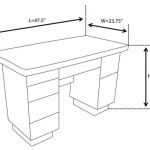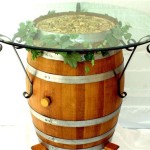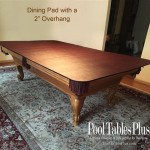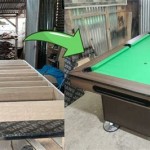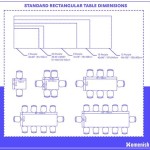Sofa Table With Storage: A Functional and Stylish Addition to Living Spaces
The sofa table, also known as a console table or hallway table, has evolved from a purely decorative piece to a highly functional element in modern homes. The addition of storage capabilities to the sofa table design has significantly increased its utility, making it an ideal solution for those seeking to maximize space and organization in their living areas. A sofa table with storage can serve as a multi-purpose piece, complementing the aesthetic of a room while providing practical storage solutions for a variety of items.
This type of furniture is typically positioned behind a sofa, against a wall in a hallway, or even used as a room divider. Its relatively narrow depth makes it suitable for areas where space is limited. The storage elements can take various forms, including drawers, shelves, cabinets, or a combination of these, allowing for customized organization based on individual needs and preferences. The design and materials used in the construction of a sofa table with storage can vary widely, catering to diverse interior design styles ranging from traditional to contemporary and everything in between.
Key Point 1: Types of Storage Options in Sofa Tables
Sofa tables with storage are not monolithic in their design; they offer a range of storage options to suit different needs and aesthetic preferences. Understanding these options is crucial when selecting the right sofa table for a specific space.
Drawers: Drawers are a common storage feature in sofa tables. They are ideal for storing smaller items such as remote controls, magazines, keys, or other everyday essentials that one wants to keep out of sight but within easy reach. The number and size of the drawers can vary depending on the overall design of the table. Some tables may feature a single, wide drawer, while others may have multiple smaller drawers. Drawer construction quality is a critical consideration, with dovetail joints and smooth-gliding mechanisms indicating higher durability and functionality.
Shelves: Shelves offer open storage space, which is useful for displaying decorative items such as books, plants, picture frames, or sculptures. Shelves can be fixed or adjustable, allowing for flexibility in accommodating items of different heights. The number of shelves can also vary, with some tables featuring a single shelf at the bottom and others having multiple shelves at different levels. Open shelving can contribute to a more airy and less cluttered feel in a room, making it a good choice for smaller spaces.
Cabinets: Cabinets provide enclosed storage, offering a discreet way to conceal items that are not intended for display. They are particularly useful for storing electronic devices, games, or other items that could contribute to visual clutter. Cabinets can have doors that swing open or slide, depending on the design. The interior of a cabinet may include shelves or simply offer an open space for storing larger items. The hardware used for the cabinet doors, such as hinges and pulls, should be of good quality to ensure smooth operation and longevity.
Combination Storage: Many sofa tables incorporate a combination of drawers, shelves, and cabinets to offer a versatile storage solution. This type of design allows for the storage of a wide range of items, catering to different organizational needs. For example, a table might have drawers for small items, shelves for decorative displays, and cabinets for concealing larger items. This versatility makes combination storage sofa tables a popular choice for those seeking to maximize the functionality of their furniture.
The choice of storage option should be guided by the specific needs of the user and the intended use of the table. Consider the types of items that will be stored and the desired level of visibility when making a decision. A well-chosen storage solution can significantly enhance the functionality and aesthetic appeal of a sofa table.
Key Point 2: Materials and Styles of Sofa Tables With Storage
The materials and styles of sofa tables with storage are diverse, reflecting the wide range of interior design preferences. The choice of material influences not only the aesthetic of the table but also its durability, maintenance requirements, and overall cost. The style of the table should complement the existing décor of the room, creating a cohesive and harmonious look.
Wood: Wood is a classic and versatile material for sofa tables. It can be used to create a wide range of styles, from traditional to contemporary. Different types of wood, such as oak, maple, pine, and walnut, offer varying grain patterns, colors, and levels of durability. Solid wood tables are generally more durable and expensive than those made from wood veneers or engineered wood. Wood tables can be stained, painted, or left with a natural finish, allowing for customization to match existing furniture.
Metal: Metal sofa tables offer a sleek and modern aesthetic. They are often made from steel, iron, or aluminum, and can be finished in a variety of colors and textures. Metal tables are generally durable and easy to clean, making them a practical choice for high-traffic areas. They can also be combined with other materials, such as wood or glass, to create a more visually interesting design.
Glass: Glass sofa tables offer a minimalist and contemporary look. They are often used in combination with metal or wood frames. Glass can be clear, tinted, or frosted, offering different levels of transparency and visual interest. Glass tables can create a sense of spaciousness, making them a good choice for smaller rooms. However, they may require more frequent cleaning to maintain their appearance.
Upholstered: Although less common, some sofa tables feature upholstered elements, such as padded drawers or cabinet doors. This can add a touch of luxury and comfort to the design. Upholstered tables are often used in more formal living spaces. The upholstery material can range from fabric to leather, and can be chosen to complement the existing furniture.
In terms of style, sofa tables with storage can be categorized into several broad categories:
Traditional: Traditional sofa tables often feature ornate details, such as carved legs, decorative moldings, and antique-inspired finishes. They are typically made from wood and are often stained in dark colors. Traditional tables are well-suited for formal living spaces.
Modern: Modern sofa tables are characterized by clean lines, minimalist designs, and a focus on functionality. They are often made from metal, glass, or wood with a simple finish. Modern tables are well-suited for contemporary living spaces.
Rustic: Rustic sofa tables feature a natural and unrefined aesthetic. They are often made from reclaimed wood or other natural materials. Rustic tables are well-suited for casual and informal living spaces.
Industrial: Industrial sofa tables combine metal and wood to create a rugged and utilitarian look. They often feature exposed hardware and distressed finishes. Industrial tables are well-suited for lofts and other urban living spaces.
Transitional: Transitional sofa tables blend elements of traditional and modern styles. They offer a balance between classic and contemporary design, making them a versatile choice for a wide range of interior design styles.
The choice of material and style should be carefully considered to ensure that the sofa table complements the existing décor of the room and reflects the personal taste of the homeowner.
Key Point 3: Functionality and Placement of Sofa Tables With Storage
The functionality of a sofa table with storage extends beyond simply providing a surface for placing items. When strategically placed, it can enhance the overall organization and flow of a living space. The placement of the table should be carefully considered to maximize its utility and aesthetic appeal.
Behind a Sofa: The most common placement for a sofa table is behind a sofa. In this position, the table can serve as a barrier between the seating area and the rest of the room, defining the space and creating a sense of enclosure. It also provides a convenient surface for placing lamps, drinks, or other items that one wants to keep within easy reach while seated on the sofa. The storage elements can be used to store remote controls, magazines, or other items that are frequently used in the living room.
Against a Wall: A sofa table can also be placed against a wall, particularly in a hallway or entryway. In this position, it can serve as a console table, providing a surface for placing keys, mail, or other items that are frequently carried in and out of the house. The storage elements can be used to store shoes, hats, or other outerwear. A mirror placed above the table can create a more inviting and functional entryway.
As a Room Divider: In open-concept living spaces, a sofa table can be used as a room divider, separating different areas of the room. For example, it can be used to separate the living room from the dining room or the kitchen. The storage elements can be used to store items that are relevant to each area of the room. The table can also serve as a visual barrier, creating a sense of privacy and separation.
In a Home Office: A sofa table can also be used in a home office, particularly in smaller spaces. It can serve as a desk or a workstation, providing a surface for placing a laptop, books, or other office supplies. The storage elements can be used to store files, papers, or other office equipment. A sofa table can be a more compact and versatile alternative to a traditional desk.
When placing a sofa table, it is important to consider the overall flow of the room and the placement of other furniture. The table should not obstruct walkways or create a sense of clutter. It should also be positioned in a way that complements the existing décor of the room. The height of the table should be proportional to the height of the sofa or other furniture it is placed next to. A table that is too tall or too short can look out of place and disrupt the visual balance of the room.
The functionality of a sofa table can be further enhanced by adding accessories, such as lamps, plants, or decorative objects. These accessories can add visual interest and personality to the table, making it a focal point in the room. The choice of accessories should be guided by the overall style of the room and the personal taste of the homeowner.
By carefully considering the functionality and placement of a sofa table, it is possible to create a more organized, functional, and aesthetically pleasing living space.
:max_bytes(150000):strip_icc()/unnamed37-dd4918a0c4af49778a16708823579322.jpeg?strip=all)
24 Sofa Table Ideas To Optimize Your Living Room

Storage Console Entryway Sofa Tables Pottery Barn

Pin On House Home

Tribesigns Console Table 70 9 Entryway Sofa With Shelves

23 Best Console Tables With Storage To Buy 2024 Viv Tim

Console Sofa Table With Storage Https Www Otoseriilan Com Rustic Tables Farmhouse Diy

Tribesigns Console Table Modern Sofa With 2 Drawers Shelves

48 In White Rectangular Solid Pine Wood Top Console Table Entryway Sofa Side With 3 Storage Drawers 2 Shelves C96 Con Whit The Home Depot

Homfa Console Table With Drawers Rustic Hallway Storage Shelves Narrow Sofa Entryway For Living Room Brown Com

Extra Long Console Table With Storage Shelves Narrow Sofa 2 Drawers




